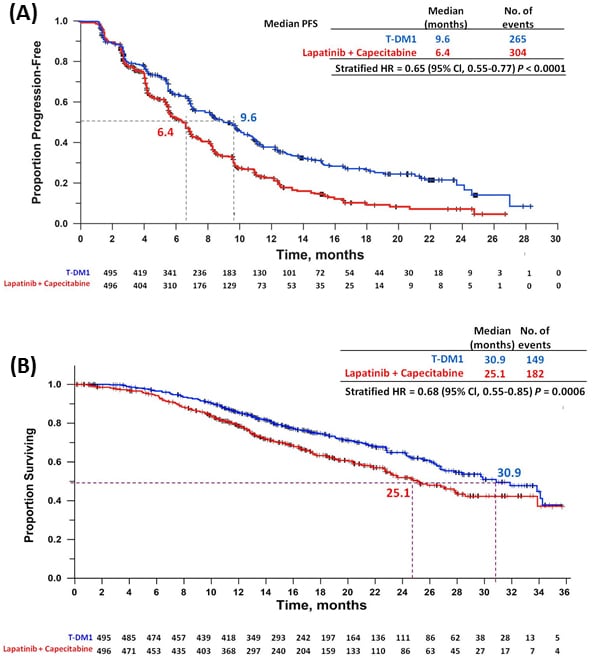 | |
| Results from the EMILIA trial on the use of T-DM1 | . |
You don't have to look hard in cancer research to see claims that some new treatment or other, increases median survival (for example see here). Generally, authors or journalists claim that the new treatment causes an increase in survival because data from a randomized control trial shows that median survival for patients who received the new treatment is higher than median survival for patients who received the alternative treatment (often the current standard of care).
I show, in this unpublished working paper, that it is a simple matter to come up with a mathematical example in which treatment A has greater median survival than treatment B, yet (almost) everyone in the data would live longer if they received treatment B.
Granted, this is just an example. However, this one example shows that observing differences in median survival does not prove that most, some or even (almost) any patients would live longer on the treatment with the higher median survival.
Why the heck are median survival differences presented in cancer research?
My best guess is that people got a little confused. It is well known that for idealized randomized control trials, the difference in average survival between treatment groups is equal to the average survival difference.
Difference in averages = Average of differences
Economists call the average of the difference, the "average treatment effect." It gives a sense of how the "average" patient in the population would respond to a change in the treatment regime she is given.
The problem comes about because the average is unavailable - everyone in the trial must die for the average to be known (without making strong parametric assumptions). As this would take a long time, even in cancer trials, we are left with measuring things about the distribution that are not averages. Maybe the thought process went something like this, "medians are like averages, perhaps the difference in median survival between treatment groups is equal to the median survival difference?"
It isn't.
What is the alternative? I don't know the answer, but we should stop presenting differences in median survival as representative of something.
I show, in this unpublished working paper, that it is a simple matter to come up with a mathematical example in which treatment A has greater median survival than treatment B, yet (almost) everyone in the data would live longer if they received treatment B.
ReplyDeleteOf course, that is true for the ATE as well. If 99% of people lose 1 month of survival, and 1% gain 200 months, the ATE would be positive. And it would be a crappy drug that did this.
At least the "averaged" patient will live 1 month longer...
ReplyDelete